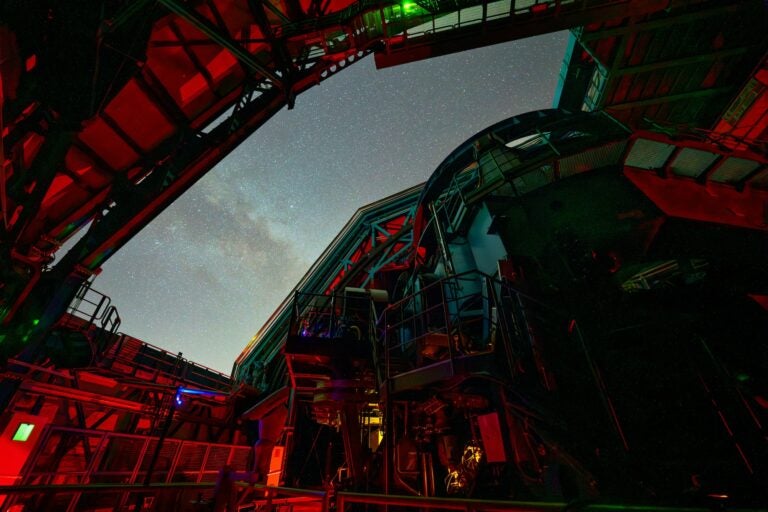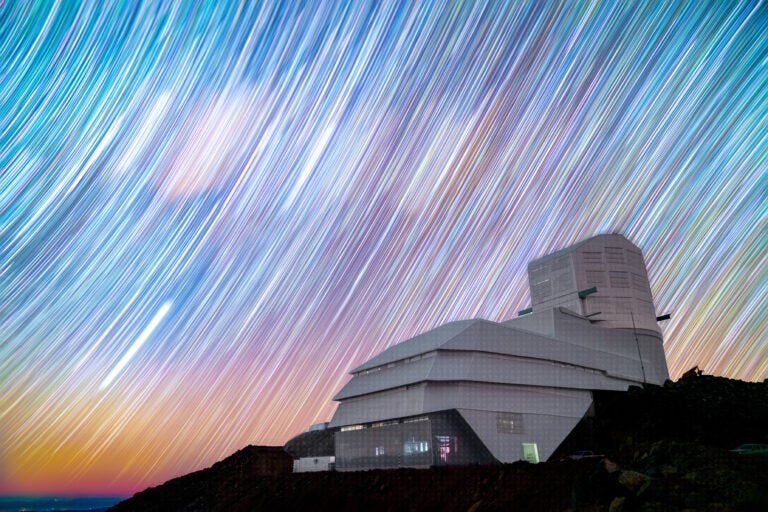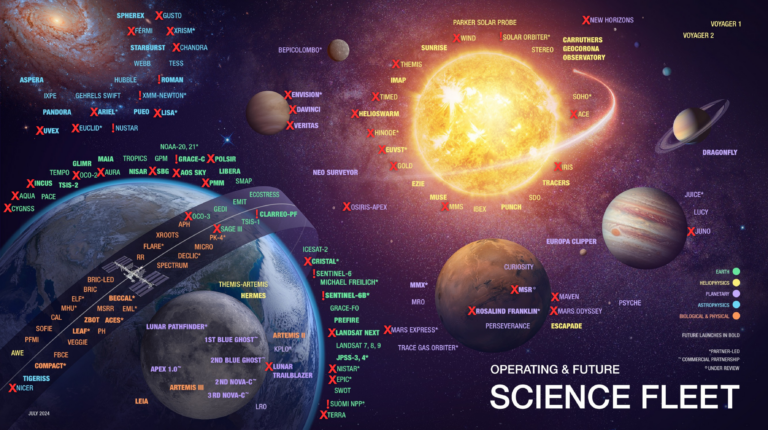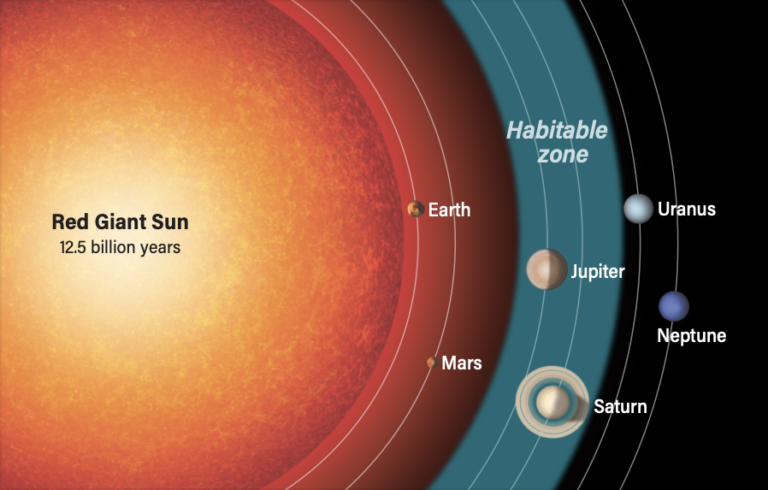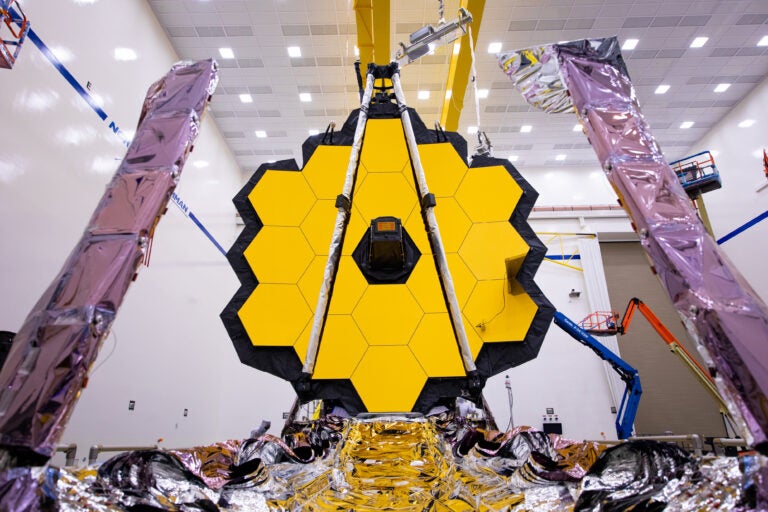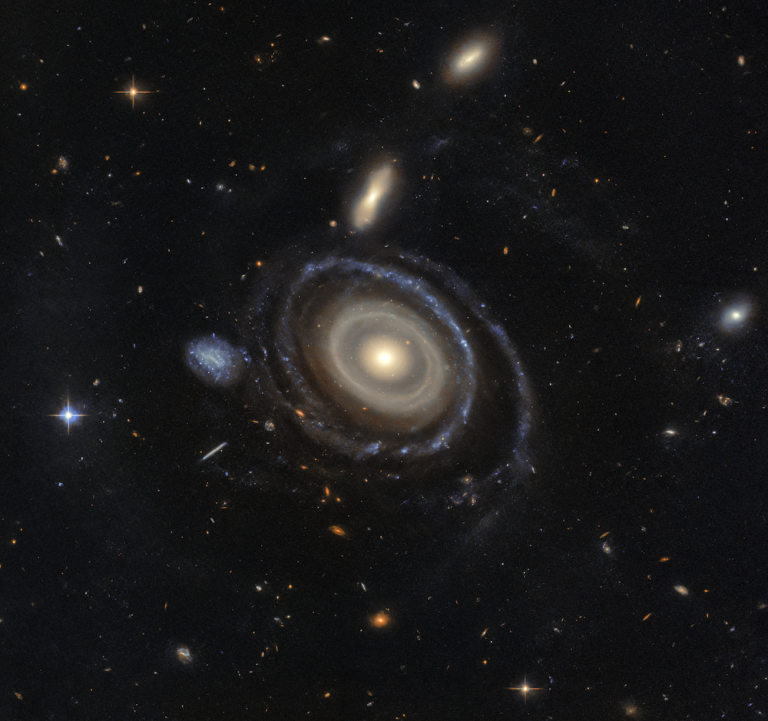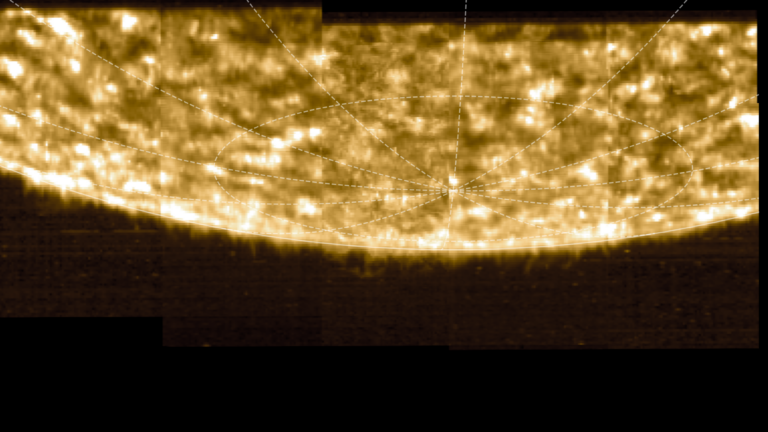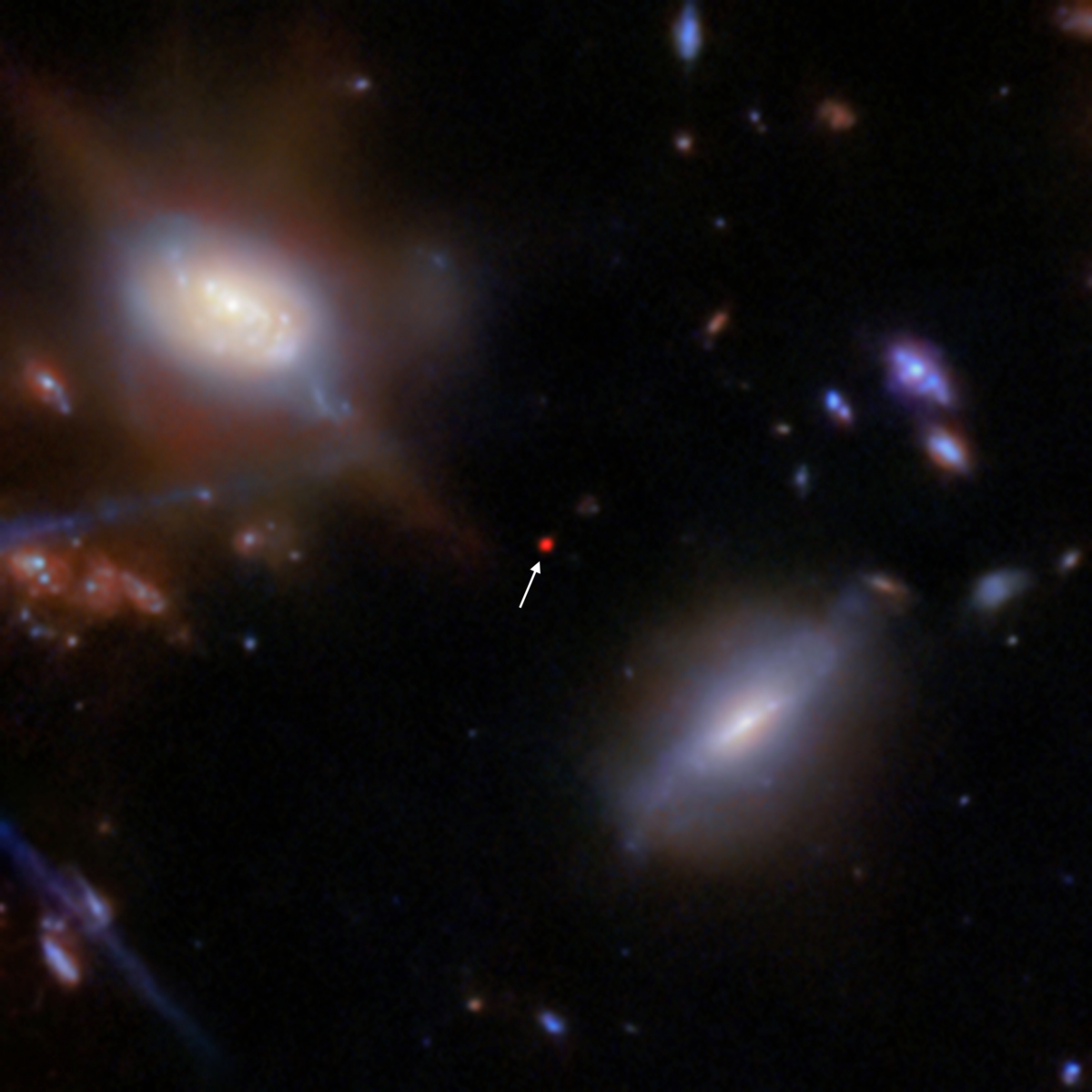
Since it began collecting data, the James Webb Space Telescope (JWST) has shined a light on the early universe, helping us better understand the timeline of events that led to our modern-day cosmos.
In a paper published March 26 in Nature, a University of Copenhagen-led team reports finding a galaxy right at a crucial moment in the early universe known as the Epoch of Reionization.
Turning the cosmos transparent
The young universe was filled with neutral hydrogen, which acts like a fog and absorbs light, preventing it from traveling very far. During the Epoch of Reionization, energetic ultraviolet (UV) light flooded the cosmos; where it encountered hydrogen, the light knocked off the atoms’ electrons and took the gas from a neutral state to an excited one. Over hundreds of millions of years, this made the universe transparent to light, allowing us to see across vast distances and far back in time ever since.
But the cause of this transformation — i.e., the source of the UV light — has long been an open question. Astronomers have theorized it came from the first generation of galaxies. Now, JWST’s ability to see some of the earliest galaxies ever found is helping astronomers narrow down the possibilities.
Stars and black holes
The University of Copenhagen team spotted a young galaxy called JADES-GS-z13-1-LA at a time when the universe was just 330 million years old. Study lead author Joris Witstok, a postdoctoral fellow at the Cosmic Dawn Center at the University of Copenhagen, says that while it’s not the most distant galaxy ever seen, currently ranking fifth, it is the first (e.g., earliest) galaxy seen in the process of reionization.
JWST data show JADES-GS-z13-1-LA is emitting radiation in a small range of UV wavelengths, called Lyman-alpha light. Lyman-alpha wavelengths are particularly susceptible to absorption by neutral hydrogen, clueing astronomers in to the fact that there is very little of it left within and around this galaxy.
One possible source of the Lyman-alpha light could be JADES-GS-z13-1-LA’s stars. As an early galaxy, it is rife with star formation and could be home to a specific type of star only present in the young universe: some of the largest stars ever born, called Population III stars. However, Witstok says the galaxy’s stars could also be “simply very hot and massive” stars that are not specifically Population III stars, but those that came a little later, after that generation of suns died out.
“Theoretical models suggest that Population III stars, which are made out of pure hydrogen and helium, should be even more massive and hotter than O- or B-type stars we see around us today,” Witstok says. “This is because they’re unable to cool down [in the same way] as ‘normal’ stars that already contain some heavier elements (like carbon, oxygen, etc.).”
This lack of cooling could make Population III stars extremely hot. And as a result, they could have generated light energetic enough to excite neutral hydrogen and cause reionization in and around galaxies — and ultimately throughout the universe.
But the UV signature given off by JADES-GS-z13-1-LA could also be from an accreting central black hole, which would be surrounded by a disk of plasma so hot that it, too, could unleash radiation energetic enough to cause reionization. If it is a black hole, it would be one of the earliest seen, and inform us about galaxy formation in the early universe. It would also support models that suggest accreting supermassive black holes, called active galactic nuclei, caused cosmic reionization instead of stars.
A candle in the dark
JADES-GS-z13-1-LA is leaking enough hot photons to excite the hydrogen beyond the galaxy’s bounds and into the intergalactic medium, creating an ionized (transparent) bubble about 650,000 light-years across. This bubble is like a candle lighting up a little bit of vast darkness around it.
Regardless of the source of JADES-GS-z13-1-LA’s Lyman-alpha light, the find helps further constrain the onset of reionization, and gives us a signpost for future JWST observations, as JWST is the only telescope large enough and with the right wavelength range to capture such distant galaxies with much detail.
Of the four known galaxies more distant than JADES-GS-z13-1-LA, as well as the 10 to 15 that lie at similar distances, Witstok says, as mentioned, none show the same Lyman-alpha signature, so there’s not much to compare it to yet.
“The search for new candidates is ongoing, so hopefully we will find other examples in the near future,” Witstok says.


